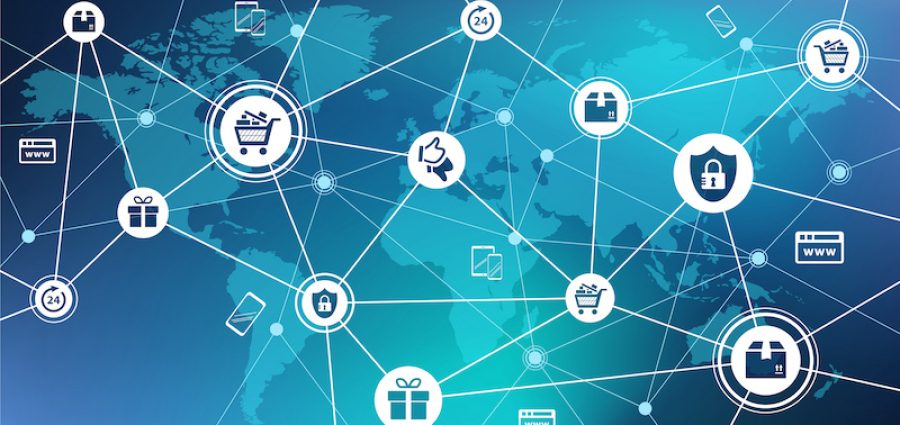Two weeks ago, we outlined Applico’s Top 50 B2B Marketplace Ranking, which focuses exclusively on independent B2B product marketplaces that facilitate the exchange of goods between a business customer and a third-party distributor and/or supplier.
For the next installment of our series, we’d like to introduce you to the top-ranked marketplace, Faire, whose co-founder is Max Rhodes and whose chief data officer is Daniele Perito.
Faire beat out other top marketplace contenders for the top spot for two main reasons: not only does Faire have impressive GMV and revenue growth, but it also is able to monetize a meaningful take rate on that GMV.
Other B2B marketplaces in the top 10 may have larger GMVs than Faire, but their ability to monetize those transactions is more limited. That may change in the future — a common platform strategy is to subsidize transactions earlier on in the platform’s lifecycle and then increase a take rate later on. However, Faire’s ability to grow GMV while maintaining a material take rate is a testament to the value it is creating for both sides of its marketplace.
As Perito points out in this interview, many of Faire’s customers and producers experienced a very difficult 2020, and Faire was a key partner to help keep the industry on its feet in such trying times.
In addition to our Top 50 report, the interview provides a window into how B2B marketplaces are scaling quickly and how distributors can capitalize on this opportunity. If distributors want a future where Amazon doesn’t dominate most of B2B, then supporting and partnering with these independent B2B marketplaces is key to making that a reality.
Moazed: I’d like to get to know the business a bit more and how you’ve built such a great company.
Perito: I’m one of the founders. I currently am the chief data officer and I oversee everything to do with data and machine learning at Faire. I like to tell candidates that marketplace businesses are uniquely positioned to be attacked using data science and machine learning techniques as they are so complex and made up of many participants that are acting in their own self-interest. We started the company four years ago. Prior to this, we were all at Square. I personally was in charge of risk and security for the CashApp, and prior to that I was in academia.
Moazed: You’re very right on data, and the importance of that, particularly in B2B marketplaces. The product data in B2B is just so difficult. And actually, a lot of the time, what we find is that it’s way more unstructured than in many of your B2C marketplaces. In B2C, there’ll often be UPC codes for example, so there are a lot more structured ways to identify products.
In B2B, there are some large textile marketplaces that also have very large, multibillion-dollar GMVs, but they don’t really have a take rate. They’re kind of taking more of like a SaaS fee, right? What do you think about Faire’s business model and how does your positioning enable you to command a take rate at the scale that you’re operating at?
Perito: Yeah, absolutely. I think when we started the company, we knew that retailers and brands face the difficult matching problem. Which, at the time, was solved thanks to trade shows and sales reps. But the difficult matching problem is that these retailers had to take inventory risk in order to choose what to buy, because they will buy some stuff, put it in their store and see how their customers would react. And, if they made too many incorrect buys, at some point, they’d go out of business.
So just by digitizing products and bringing them online, you didn’t necessarily help the retailer too greatly. They were always used to seeing a product in person, at a trade show, and maybe they would even talk with the brand owner. Now, online, retailers were forced to just see a photo online and get some description. But that process wasn’t necessarily better from a retailer’s perspective. We knew that we needed to take risk on behalf of retailers and help them with their returns. We offer net 60 payment terms, meaning that retailers don’t have to pay anything up until 60 days after they place an order. In effect, that gives retailers the ability to try things before they have to pay for them.
Retailers can put products on their shelf and see how customers react. And then, if something doesn’t work, the retailer can return it within 60 days – no questions asked. So we started a business knowing that we needed to take some risk on behalf of our customers in order to facilitate the exchange. And as a result of this, taking a commission was sort of a logical necessity, if that makes sense. We knew that by virtue of this fact, we were going to incur into variable costs and therefore we needed to charge a variable commission, like a percentage-based commission.
And I think over time, we’ve been able to continue offering more valued added services on top. Like Insider, which is our equivalent of Amazon Prime, where we offer free shipping. We’ve rolled out better and better tools to our brands, including CRM tools and, email marketing tools. And by adding more and more value to the marketplace, together with the original idea that we’ll give free 60-day returns, we’ve been able to give enough value to justify our customers paying the commission.
Moazed: So, to clarify – a retailer can buy products and not pay for them for 60 days. And, they can also return the products in that 60 day timeframe?
Perito: Yes, we made it so that it lines up with the net 60 payment terms so that you effectively get the same window to either pay or return.
Moazed: I love that because what you’re essentially saying to the retailer is: order this product. The retailer is not technically taking it on their balance sheet, not for the first 60 days, it’s basically risk-free. They can return it, no hassle.
So the retailer can get a taste for how well consumers actually want to buy that before the retailer really commits, or maybe the retailer could send back part of the order, not all of it, because it’s not getting as much throughput as they had thought. And Faire is reducing a lot of that balance sheet risk and exposure that your retail customers would have to take on otherwise. Do I understand that correctly?
Perito: Yeah. And I think it also then does one more important thing. Which is, it aligns incentives between us providing the best possible recommendations and the best possible products and brands in the marketplace for our retailers. And I think that’s one of the important guiding principles behind starting Faire, which was that we wanted to build a system, and then in a system of incentives that will make us successful only if we made our customers successful.
Moazed: I love that. That is essentially what the large retailers, the large department stores have a lot of that leverage when they buy, right? If you’re Macy’s, you’d be able to buy and then you can return some of that if it doesn’t sell, and you get all of these downside provisions from the suppliers, but Macy’s has that buying power and that leverage to command those, that smaller retailers don’t have until Faire came along.
Perito: Yeah, absolutely. And you know, another thing that was really important for us, coming from Square, was the idea of leveling the playing field and giving the smaller businesses the same tools that the larger players have enjoyed. And I think the idea here is exactly this, like Nordstrom has always been able to negotiate net 60 or net 90 payment terms. And then sometimes they will negotiate return provisions, because of their sheer scale. But Faire, as a platform, can aggregate all of these retailers and offer the same type of provisions to them. This time, not just by scaled bargaining, but it’s because we can use technology to offer it, and the types of efficiencies we can get a scale in improvements and recommendations and selection that we can use to then offer these value propositions, which make these small players more competitive against the larger players, which is progress.
Moazed: Now you’re layering in additional services. What’s the focus there? Is fulfillment a part of that equation?
Perito: No, we do not currently offer fulfillment services ourselves. On the retailer side, we’ve been focusing on helping them reduce costs with our Insider program, which effectively for a monthly fee. Similarly, Amazon Prime allows them to order wide selection of products and brands with free shipping. Together with other incentives like exclusivity, they get a short-term exclusivity for seeing products first, but the biggest value proposition there is the free shipping. And that is just because we noticed that retailers don’t really think enough of free shipping as one of the main costs that their business incur into. And therefore we wanted to help them out and over free shipping ourselves. And again, that forces us to get good at lowering shipping costs, negotiating with large, national shipping providers and as well as local ones.
So on the retail side, we focused on the shipping component. On the brand side, what we discovered is that the thing that brands want the most is reaching the largest number of potential buyers possible, and therefore we’ve given them CRM tools and email marketing tools. We also provide a widget that brands can put on their website, where we will actually subsidize part of the orders placed by retailers through the widget. We use it as a referral program that really helps out the brand, get their names out there, and get bigger customers.
Moazed: Interesting. So they put a widget on their site, and then what? How do retailers take advantage of the subsidy?
Perito: Usually brands put it on their e-commerce site, but then if a retailer clicks on that widget, they’ll go to a Faire landing page and the retailer will be able to buy from that brand.
Moazed: Faire has raised over $400 million and you had around, a $2.5 billion valuation in the fall of 2020. You have 10X revenue growth, 150,000 independent retailers in the marketplace. My rough math would put most B2B marketplaces at something close to a 1X valuation to GMV, multiple. Am I far off on that or any of these other numbers?
Perito: The numbers that we’d like to share, the number of retailers is more than 150,000 retailers that have purchased from Faire, and then the 15,000 brands available on Faire. We don’t usually share the GMV numbers. I think that you can do some rough math and you’re not going to be probably that much off. But we’ve seen tons of growth, especially thanks to the fact that our retailers really like the product and order more every year that they stay with us and it’s being a great engine of growth. And a great validation of what we’re doing. Because it means that we’re providing, at least some value to them. And that’s great.
Related Posts
-
Digital platform consultancy ranks its top 50 B2B marketplaces, focusing exclusively on independent B2B product…
-
Applied’s addition of Massachusetts-based Gibson Engineering Company Inc. should boost distributor’s automation offering.
-
There is a big difference between sessions and raw new visitor traffic. Distributors have built…






